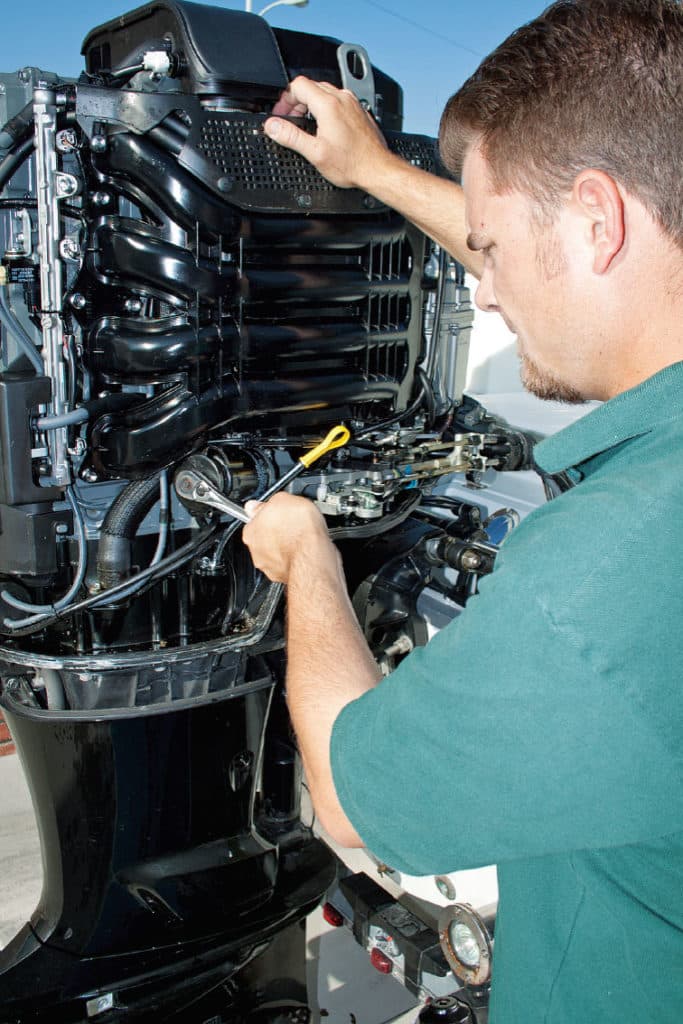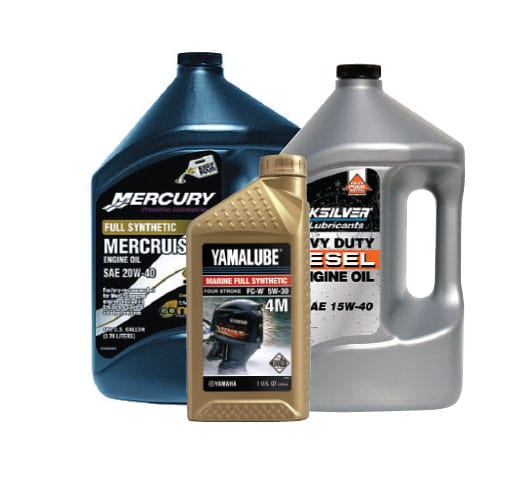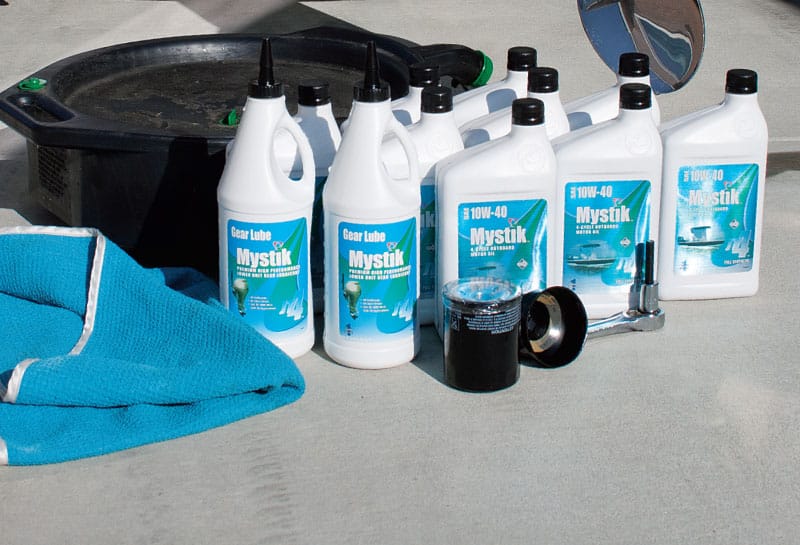
Consider the differences in how you use your marine engine versus your car engine. Start with the amount of use: Most cars run every day, while most recreational-fishing boats sit idle for days, frequently in damp, salty environments. When under way, your marine engine operates under constant load, even while trolling; when cruising, it runs at a relatively high number of revolutions per minute. Autos, on the other hand, can lope along in overdrive at lower revs, and often have the luxury of coasting. No such luck with a boat.
These key differences mean that the marine drivetrain in your fishing boat needs specialized lubricating fluids. Let’s take a look at factors to keep in mind when selecting oils for your boat engine.
Factory Brands
Whenever asked about the best marine oils, I have a simple answer: Buy the same brand as your engine. Builders such as Cummins, Detroit Diesel, Evinrude, MerCruiser, Suzuki, Tohatsu, Volvo Penta, Yamaha and Yanmar have vested interests in keeping their engines running strong, particularly during the factory-warranty period, which might stretch to six years. So it makes sense that the factories formulate oils to keep their power trains in the best possible condition. Availability of factory brands is often limited to authorized dealers, and these products usually carry a premium price. Call it cheap insurance.

In addition, a few marine engines need specialized oils from the factory. For example, upon request, some Evinrude E-Tec outboards can be programmed by an authorized dealer to minimize the amount of two-stroke oil they consume. Once reprogrammed, however, such an outboard requires Evinrude’s XD100 synthetic two-stroke oil in order to operate reliably.
Also, when it comes to a four-stroke gasoline or diesel engine, the builder will specify a grade of oil, such as 10W-40, though it might list a range of grades to use, depending on the season or climate. A builder will also specify the grade of gear oil to use in a lower unit or transmission, such as 90W or 80W-90. Check your owner’s manual to make sure you’re using the recommended grades, or you might invalidate your engine warranty.
Certified Oils
Whether shopping for factory brands or not, use only marine-engine oils that have passed the National Marine Manufacturers Association certification test, indicated on the label as TC-W3 for two-stroke oil and FC-W for four-stroke oil. This means the oil contains additives to deal with the unique combination of harsh factors facing marine engines, such as long periods of inactivity, moisture, corrosion, carbon deposits, greater loads and higher operating speeds. It also means that samples of the oil — be it engine-branded or an independent brand such as Mystik Lubricants, Pennzoil Marine* or Sierra Marine — have been tested for effectiveness in the demanding marine environment.

The NMMA does not have a certification program for gear oils, but it’s important to buy brands formulated for marine use, as lower units and gear boxes face many of the same challenges as marine engines. Once again, you can’t go wrong using the same brand as your drivetrain, but brands such as Mystik, Pennzoil and Sierra also offer marine-specific gear oils. Avoid using any ol’ gear oil you pick up at an auto-parts store.
Stick to a Schedule
With four-strokes (both inboards and outboards), adhere closely to the recommended oil-change schedule outlined in the owner’s manual. Many marine engines now have electronic reminders — often a small light on the tachometer — that tells you it’s time to change the oil. This interval usually occurs every 100 hours or six months, whichever comes first.
The owner’s manual lists how much oil the engine requires, and it’s just as important not to overfill as it is not to underfill. Too much oil can lead to excessive crankcase pressure, which might blow a main seal. Too little oil can starve the engine of vital lubrication. Have an extra quart or two of engine oil on board at all times, as you might need to add some between changes, particularly with older engines that tend to burn a bit of oil. Check the dipstick before each trip to ensure the engine has sufficient lubrication. Avoid mixing brands and grades of oil.

Always change the oil filter at the same time as the engine oil, as this canister traps dirt, tiny bits of metal and other debris that can damage valve trains, crankshafts and cylinders. Be sure to dispose of oil properly by dropping it off with an authorized recycler.
Two-stroke engines — such as the Evinrude E-Tec, Mercury OptiMax and Yamaha HPDI outboards — have no crankcase oil to change but do have reservoirs for the oil-injection system that require periodic refilling. A warning light on one of the factory gauges alerts you to the need for more oil. However, all outboards and sterndrives have lower units that need gear oil. Check your owner’s manual to determine how often to change the gear oil. Usually, it’s every 100 hours.
Anglers run their boats much differently than they run their cars or trucks. That’s why your marine drivetrain requires its very own breed of lubricants. If it’s not oiled well, it might not end well.
Marine Grease









